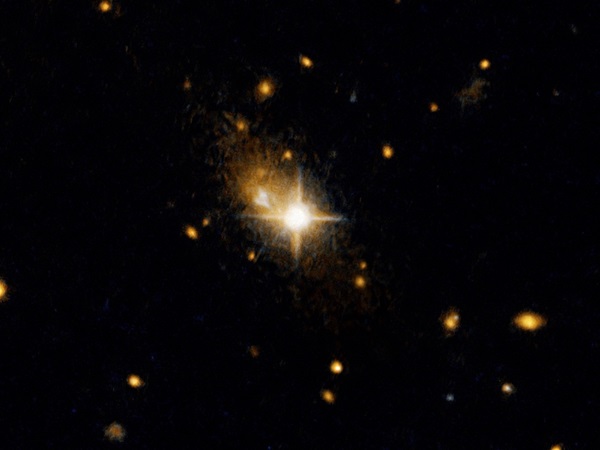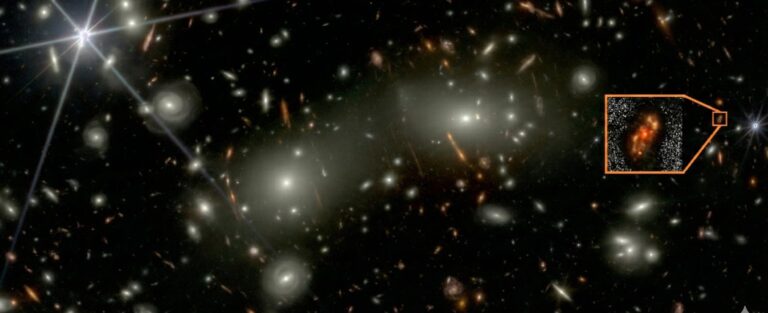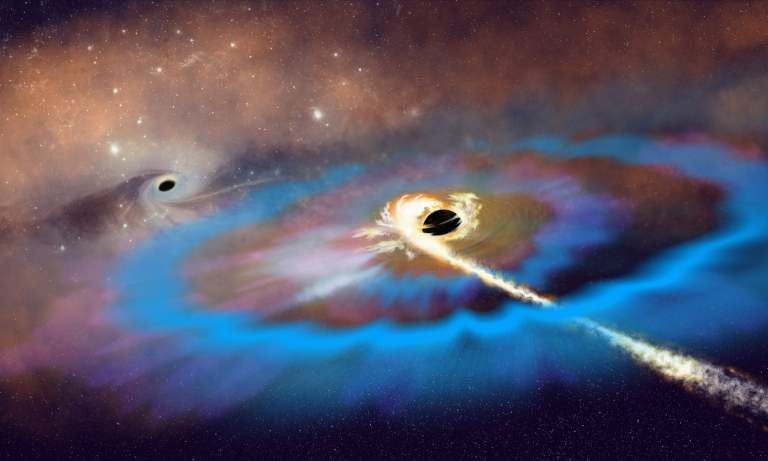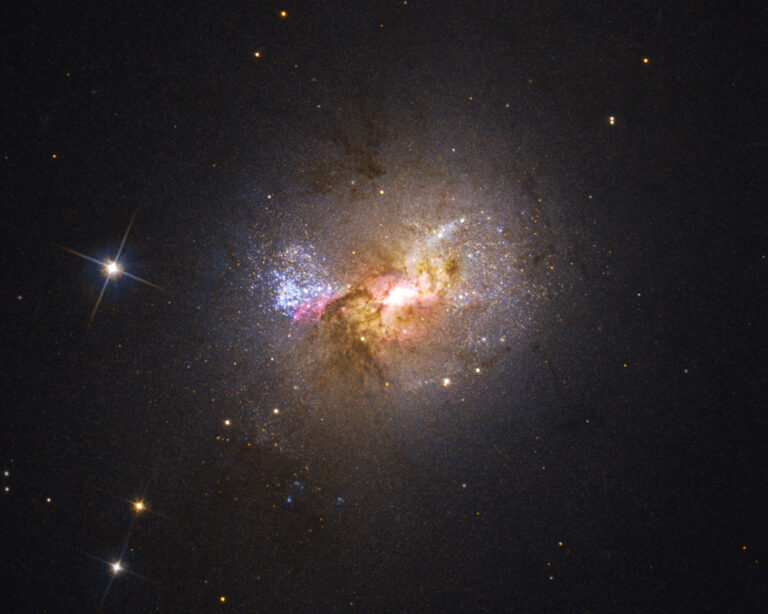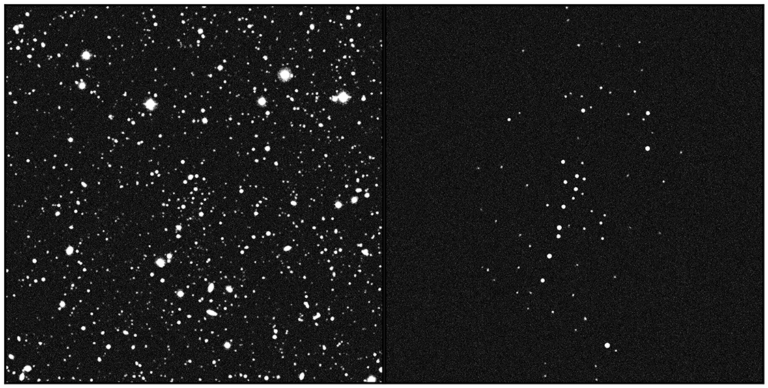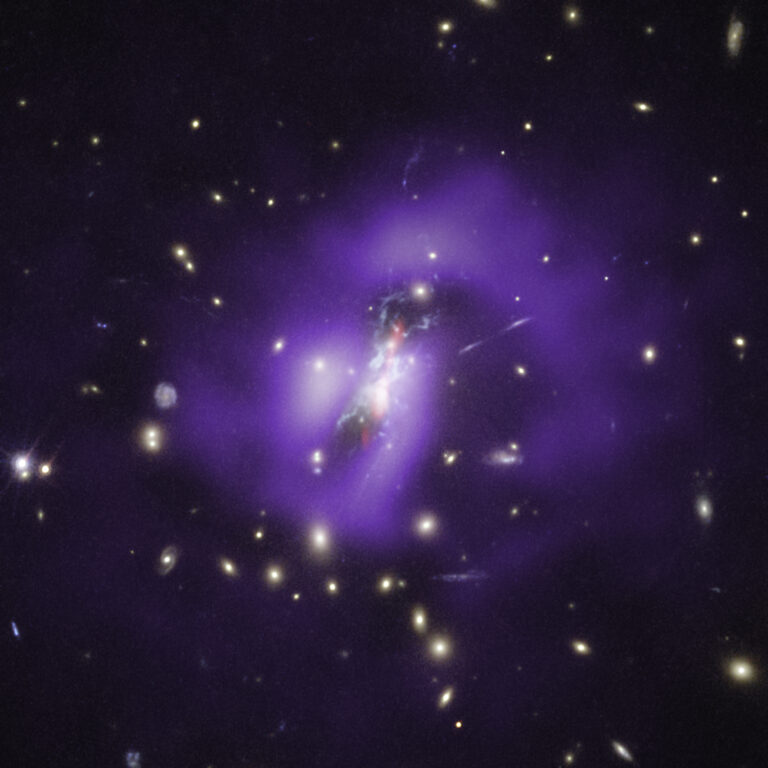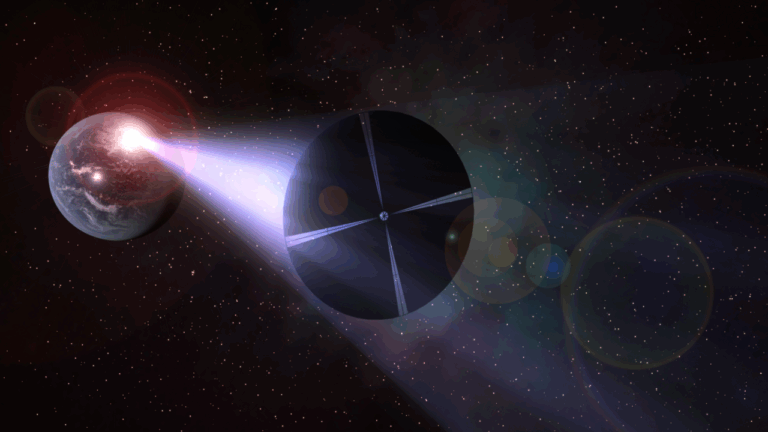Key Takeaways:
Q: What will happen to the stars in the galaxy 3C186, now that the central supermassive black hole has been ejected from the galactic center? Will they slowly drift apart, or will their collective mass hold them together for a while?
A: Located 8 billion light-years away, the galaxy 3C186 is home to an extremely bright galactic nucleus — the signature of an active supermassive black hole (SMBH). But this SMBH is about 35,000 light-years from the center of the galaxy, suggesting it was kicked out of the galactic center.
As to what happens to the rest of 3C186, the short answer is that the galaxy will remain as it is. A galaxy is held together by the collective mass of its stars, gas, and dark matter, and any gravitational effects of the central SMBH are negligible with respect to that of the whole galaxy. For example, the SMBH at the center of our own Milky Way — Sagittarius A* (Sgr A*) — has a mass only one-millionth the total mass of the galaxy. So, Sgr A* only dominates the motions of the stars and gas in a very small central volume and not of the galaxy as a whole.
When two galaxies merge, their SMBHs will eventually coalesce into a new SMBH. In the case of 3C186, this new black hole likely received a “kick” from the gravitational waves emitted during the SMBH merger, acquiring velocities up to several thousand miles per second.
As a result of this kick, 3C186’s SMBH’s orbit began to oscillate around the galaxy’s core. Nearby stars and gas were pulled along with it, in principle creating observable effects such as distortions in the morphology and dynamics of the galaxy. However, since the SMBH’s sphere of influence is very limited, the entire galaxy will not suffer major disruptions, even if the black hole is completely ejected.
But this does not mean that the overall influence of the central SMBH on the host galaxy is negligible! There are a number of extremely close relations between the mass of the SMBH and the properties of its host galaxy, known as scaling relations. These mean the host galaxy and its SMBH essentially grow together. But, as we have seen, this cannot be due to the gravitational influence of the SMBH. There must be something else causing this relationship.

